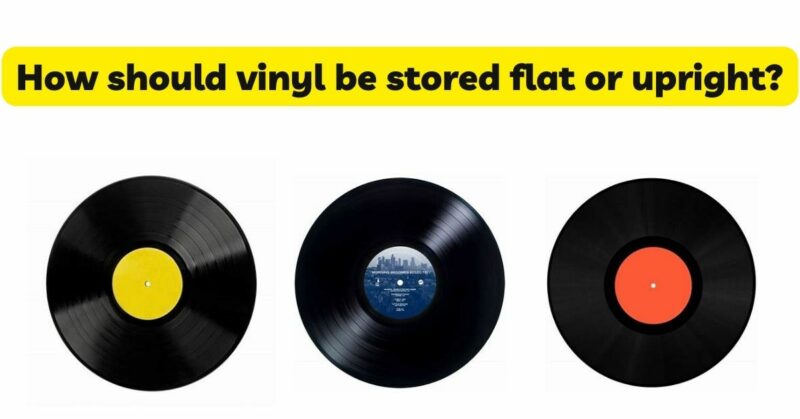As vinyl records continue to captivate music enthusiasts with their warm sound and nostalgic charm, the question of how to store them properly arises. One common debate centers around whether vinyl records should be stored flat or upright. Both methods have their proponents, and understanding the benefits and drawbacks of each approach is essential for preserving the integrity and longevity of your vinyl collection. In this article, we will delve into the considerations of storing vinyl records flat or upright, exploring the effects on warping, groove distortion, and other factors to help you make an informed decision.
Storing Vinyl Records Flat:
- Minimizing Warping: Laying vinyl records flat helps reduce the risk of warping. Gravity acts uniformly on the record surface, distributing weight evenly and preventing distortion. Flat storage ensures that the record maintains its original shape and minimizes the potential for uneven surfaces that can affect playback.
- Enhanced Stability: Storing vinyl records flat provides increased stability. Records stacked on top of each other in a horizontal position are less likely to shift or slide, reducing the risk of scratches or accidental damage during handling or storage.
- Efficient Use of Space: Flat storage allows for efficient use of storage space. Records can be neatly organized in bins, shelves, or storage units, maximizing the capacity to accommodate a larger collection. This method is particularly useful for collectors with limited space or those looking to optimize their storage solutions.
Storing Vinyl Records Upright:
- Preservation of Album Covers: Storing vinyl records upright allows for better preservation of album covers. Upright storage provides support to the record covers, reducing the risk of bending or creasing. It allows for easy visibility and access to the album artwork, enhancing the overall aesthetic experience.
- Minimizing Groove Distortion: Vinyl records store sound information in the grooves, and prolonged pressure on the grooves can lead to groove distortion. Storing records upright reduces the risk of groove compression that can occur when records are stacked on top of each other. It helps maintain the integrity of the grooves and minimizes potential damage during storage.
- Ease of Browsing and Selection: Upright storage facilitates browsing and selection of records. When stored vertically, record spines are visible, allowing for easier identification and quick access to specific albums. This method is favored by collectors who enjoy the visual aspect of their vinyl collection and want to maintain an organized library.
Considerations for Storage:
- Record Sleeves and Covers: Regardless of whether you choose to store vinyl records flat or upright, it is crucial to use high-quality inner sleeves and protective outer covers. Inner sleeves should be anti-static and provide a smooth surface to prevent scratches and dust buildup. Outer covers should be sturdy and protective, shielding the records from potential damage during storage.
- Temperature and Humidity Control: Proper temperature and humidity control are vital for vinyl record storage, regardless of the orientation. Keep records in a controlled environment with stable temperature and humidity levels to prevent warping, mold growth, and degradation of the vinyl material.
- Avoiding Direct Sunlight: Protect vinyl records from direct sunlight exposure, as it can cause fading, discoloration, and deterioration of the album covers and labels. Store records away from windows or use UV-blocking window film or blinds to minimize the risk of sunlight damage.
- Handling and Cleaning: When handling vinyl records, always hold them by the edges or the center label to avoid fingerprints and smudges. Regularly clean records using appropriate methods and tools to remove dust and maintain optimal sound quality. Clean the turntable stylus regularly to prevent dirt buildup and ensure accurate playback.
Conclusion:
The debate over whether to store vinyl records flat or upright ultimately depends on your preferences and specific storage needs. Storing records flat minimizes the risk of warping and provides efficient use of space. On the other hand, upright storage preserves album covers and reduces the potential for groove distortion. Regardless of the chosen method, it is essential to prioritize record sleeves, temperature and humidity control, and proper handling and cleaning techniques. By employing these strategies, you can ensure the longevity and quality of your vinyl collection, preserving the cherished music and cultural heritage for years to come.


